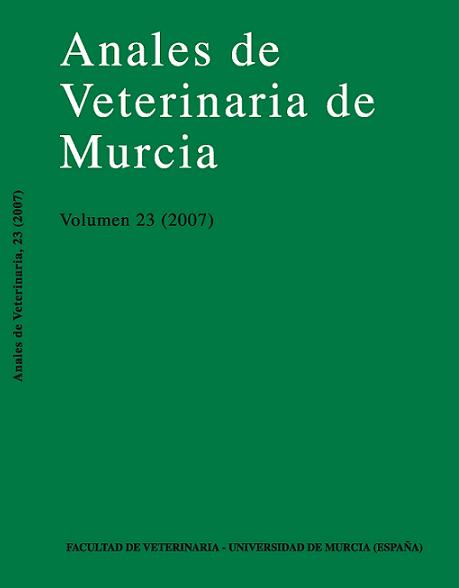HAPTOGLOBIN IN RUMINANTS: GENERAL ASPECTS AND POSSIBLE CLINICAL APPLICATIONS
Abstract
Haptoglobin is one of the major acute phase proteins in ruminants. Its use has a great potential as an early indicator of infl ammatory conditions, trauma and metabolic disorders, besides having importance in determining the prognosis and monitoring specific diseases. One of the main clinical applications of haptoglobin is an indicator of subclinical mastitis thorough its determination in milk samples, having more sensibility than other traditionally used indicators as somatic cells counting. The present work describes the relations between haptoglobin with some infl ammatory conditions, mastitis and metabolic disorders, such as ketosis, acidosis and hepatic lipidosis and indicates new research areas that may be explored in the future.Downloads
Creative Commons Attribution 4.0
The works published in this journal are subject to the following terms:
1. The Publications Service of the University of Murcia (the publisher) retains the property rights (copyright) of published works, and encourages and enables the reuse of the same under the license specified in paragraph 2.
© Servicio de Publicaciones, Universidad de Murcia, 2019
2. The works are published in the online edition of the journal under a Creative Commons Attribution-NonCommercial 4.0 (legal text). You can copy, use, distribute, transmit and publicly display, provided that: i) you cite the author and the original source of publication (journal, editorial and URL of the work), ii) are not used for commercial purposes, iii ) mentions the existence and specifications of this license.

This work is licensed under a Creative Commons Attribution-NonCommercial-NoDerivatives 4.0 International License.
3. Conditions of self-archiving. Is allowed and encouraged the authors to disseminate electronically pre-print versions (version before being evaluated and sent to the journal) and / or post-print (version reviewed and accepted for publication) of their works before publication, as it encourages its earliest circulation and diffusion and thus a possible increase in its citation and scope between the academic community. RoMEO Color: Green.




